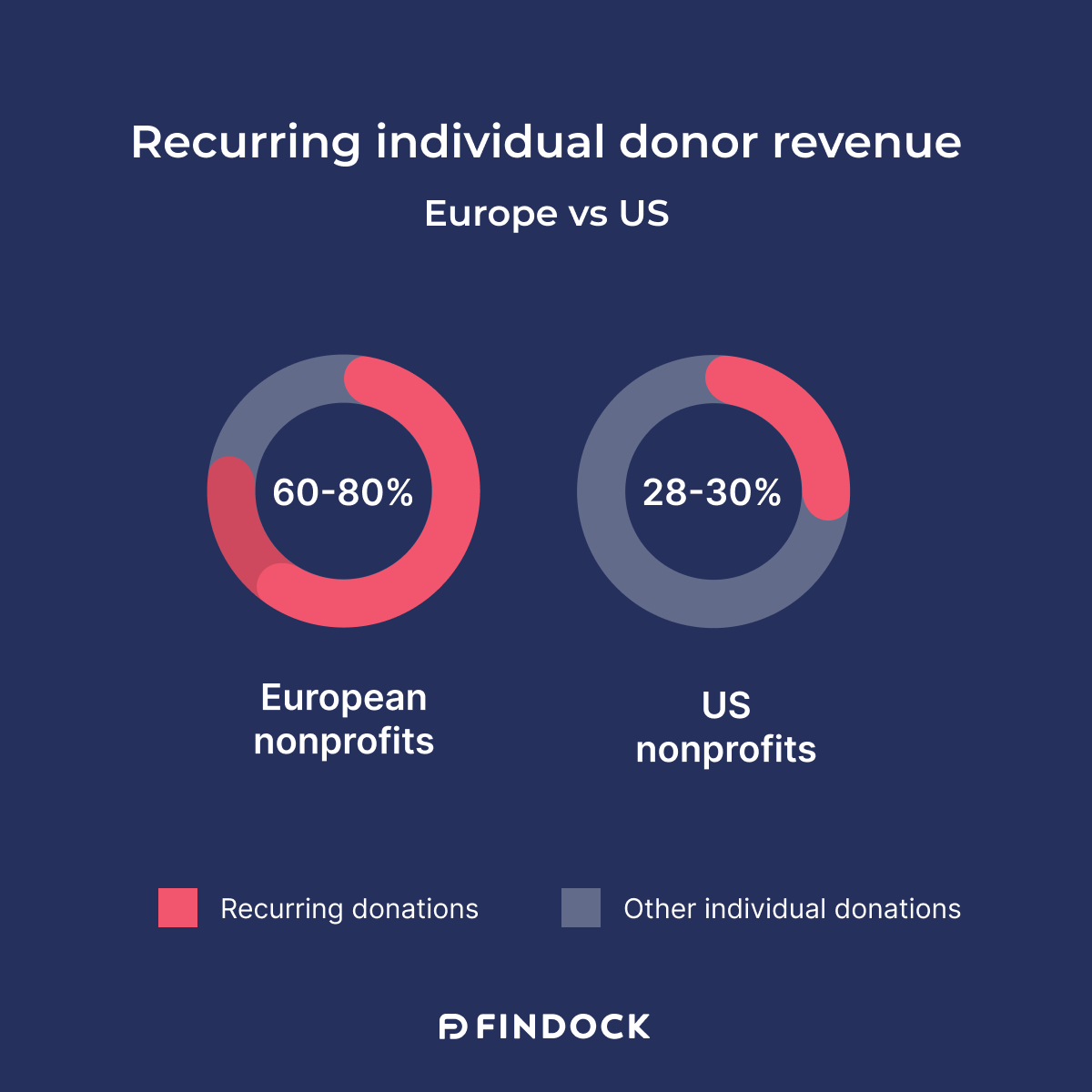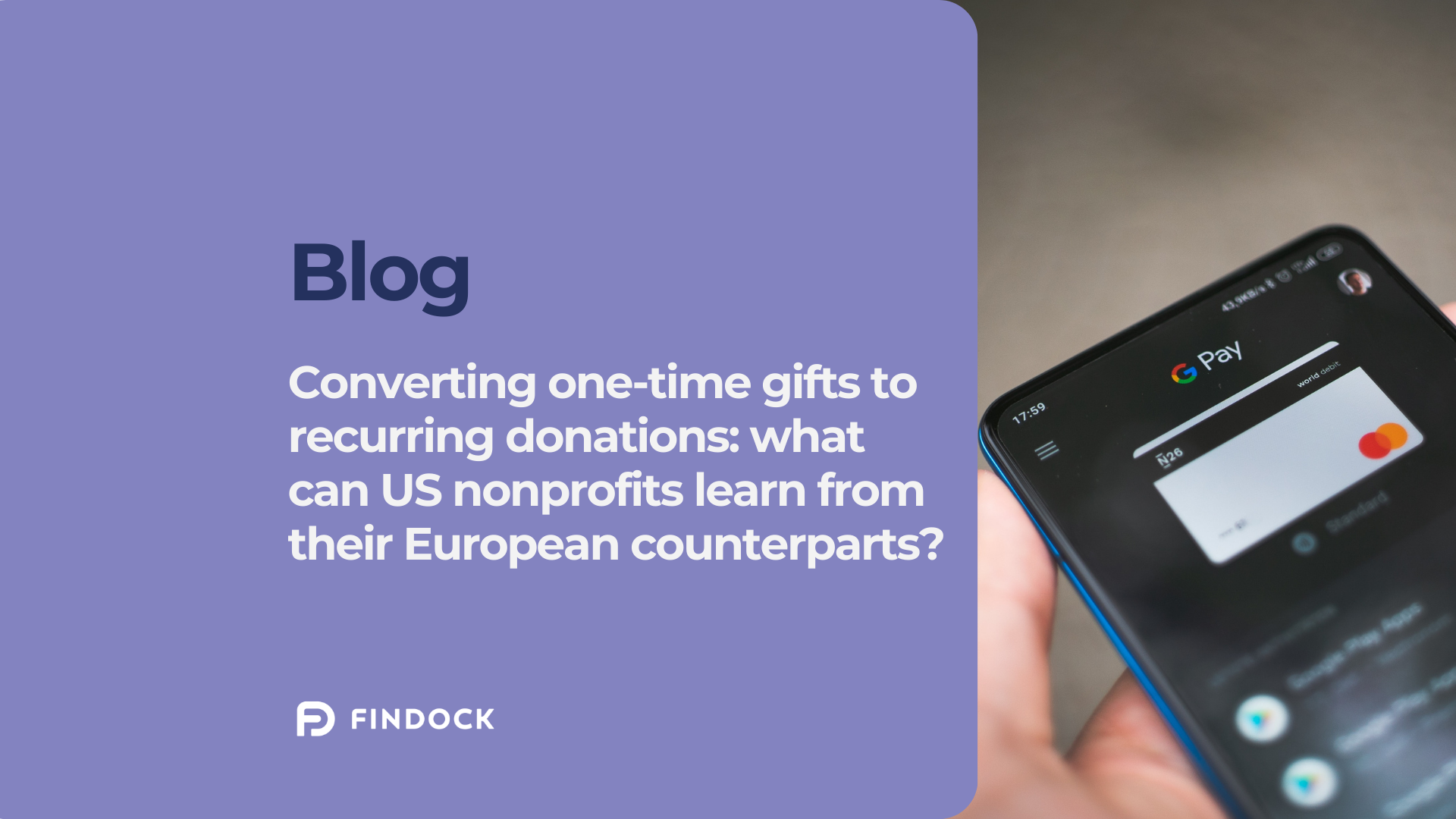Regular givers, recurring givers, sustainers, recurring donors: depending on the country you’re in, you’ll probably recognize one of these terms. Essentially, they all describe one type of donor: a giver who makes donations on a regular basis and is therefore responsible for a nonprofit organization’s regular recurring revenue.
Let’s solve the linguistic predicament first: for clarity purposes, we’ll go with ‘recurring donations.’
Now, let’s dive into the matter. Although a regular revenue stream requires consistent efforts to make it work (you should continuously nurture it), it’s usually preferable over one-off revenue. In Europe, nonprofits have embraced this idea and doubled down on this type of donation. But in the U.S., nonprofits historically have relied more on one-time donors. What can they learn from their European counterparts?
What are the benefits of recurring donations?
A recurring giving program comes with several benefits. Generally speaking, a larger number of recurring givers will increase your funds. The average recurring gift is $52 a month, which comes down to $624 a year. A one-time gift, on the other hand, is usually around $130.
On top of that, your organization will be able to predict its revenue, which means you can plan around it. And make no mistake: lower donations are worth their weight in gold. They add up over time, provide visibility into your expected income, and give you an opportunity to budget for things.
Donor retention rates for recurring donors are also higher. For the first five years, retention rates average 82% and then increased to 95% in the next year.
U.S. versus Europe: what’s the status quo?
On average, monthly donors are a mere 28-30% of a U.S. nonprofit’s individual giving. Of course, the numbers bump up at times — for example, at the year-end. But there’s also a missed opportunity here, for it’s the perfect time to ask a one-time donor whether they want to become a recurring giver.
European nonprofits seem to have their ducks in a row: approximately 60-80% of their private-donor revenue comes from recurring donations. How have they pulled this off?

And while many U.S. nonprofits use direct mail agencies to send out gift letters, European organizations (which tend to deal with a smaller geographical area) usually opt to handle such tasks in-house. As a result, they have more control over the process. Plus, direct mail agencies usually encourage nonprofits to keep asking for one-time gifts, since these are their incentive.
Finally, there’s a cultural aspect to Europe’s tendency toward recurring donations. In the U.S., people like to donate one bigger amount when a certain issue captures their attention, but they’re less inclined to commit. European donors gravitate toward making smaller donations on a recurring basis.
Toward recurring donations: where to start? [4 tips]
1. Change your organization’s mindset
Simply setting up a new revenue model won’t suffice. To make it succeed, you need to realize a mindset shift: employees need to understand the revenue model’s value, so they will foster the relationship with existing donors and encourage them to make recurring donations.
2.Communicate, communicate, communicate
Alongside your own organization’s mindset, your donors’ mindset will need to be changed as well. This requires you to explain over and over again why (lower) recurring donations are actually valuable and how they can lead to more impact down the line. For instance by you being able to now schedule longer term projects that focus on sustainable impact rather than just emergency relief. Make sure to also provide channels to control the recurring donations, to pause, increase or decrease them easily so donors are still in control of their giving!
3.Get to know your donors and provide flexibility
It’s important to know how donors make one-time payments. For example, why do they use their credit card? Do they prefer this payment method, or is it the only option you offer? And who are the donors that opt for debit card payments? Once you know the answers to such questions, you can approach them in a targeted way: offer alternative options and encourage them to make recurring donations using their preferred payment method. You’ll go in prepared, which gives you an edge.
4.Build connections with your donors
As a nonprofit, you probably want to rely on regular revenue. So, make sure to acknowledge donors who make recurring donations. What also works well is to incentivize them. For example, offer monthly donors a small ‘extra’ that one-time donors don’t get (like a personal message from your organization’s president). To make efforts like these succeed, you should understand what drives your donors. Only then, you’ll be able to properly communicate with them and convey your message.
Recurring donations: how to lay a technical foundation
If you want to receive more recurring donations, there are several technical (or technical areas and drop issues) issues you should tackle. For example, what to do with people who promised to donate every month but whose donations you haven’t received? And how to communicate with donors about payments when a large number of people donate low amounts?
The answer is in your CRM — or more precisely, in the powerful combination of Salesforce and FinDock. If you handle donations in the same place where you store all donor information, it’s easy to streamline payments, requests, and donor communications. You can even go ahead and create a hyper-personalized donation journey.
Want to learn more? Contact us to discuss your opportunities or schedule a discovery call to see how our payment management solution works.
